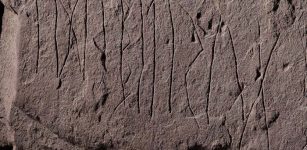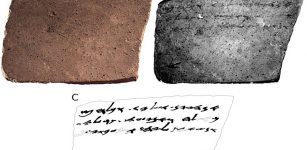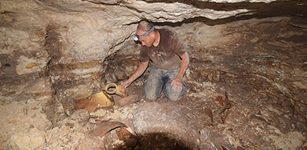Ancient Native American Stories Of Great Floods In Tennessee Confirmed By Scientists – 1867 Flood Was Not The Worst One
Jan Bartek - AncientPages.com - For a very long time, Native Americans have told stories about great floods that devastated Tennessee, USA. Memories of these catastrophic events have been preserved by Native Americans who passed on these accounts from one generation to the next.
Few paid attention to these oral histories, but this has changed now as scientists have found conclusive evidence supporting ancient Native American myths.
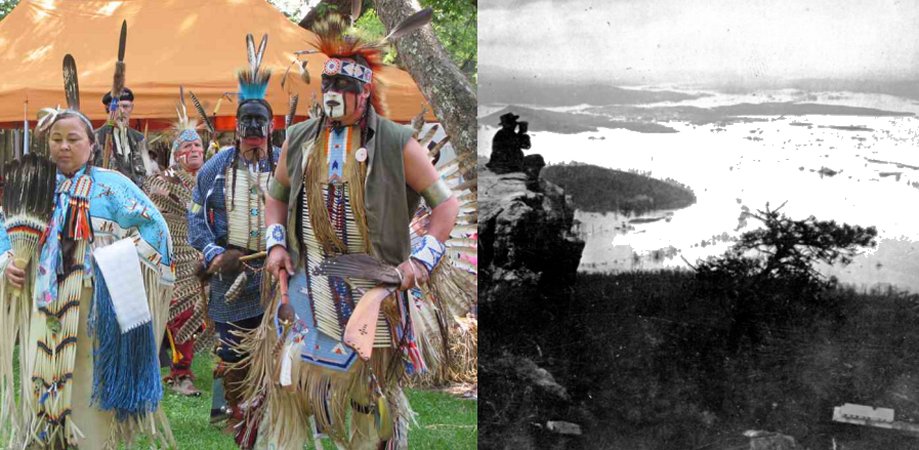
The Cherokee of East Tennessee. Credit: Johnson City Press - Chattanooga, TN: The Great Flood in 1867. Credit: Times Free Press
In 1867, melting snow from the Smoky Mountains and four days of rain wrought Biblical destruction along the Tennessee River Valley. In Knoxville, Tennessee, the flooded river took out the town’s only bridge and stranded the residents on a hilltop downtown. Chattanooga, Tennessee, was nearly wiped off the map before the flood waters swelled downstream in rural parts of Alabama.
The Tennessee River crested 58 feet above normal in Chattanooga, nearly double the recognized flood level. It’s the high-water mark, if you will, for floods along the middle Tennessee River. In scientific jargon, it’s the flood of record.
But what is a record? The devastating flood remains the worst in the river’s history since record-keeping began, but it was not the first horrible flooding in the region.
Scientists know that when flood waters recede, they leave behind minerals. Dr. Lisa Davis, a geomorphologist at the University of Alabama has been digging in the dirt, and she has found evidence of much larger floods than the one that occurred back in 1867.
A record’s length and the number of extreme events contained will affect estimates of how often floods occur. That knowledge can be found in records not kept by humans. Etched in trees or buried beneath the ground, these natural records can reveal how the Earth’s systems have behaved over long periods, possibly as far back as 10,000 years.
Davis and her graduate student, Ray Lombardi, found at least three floods in the last 2,300 years along the Tennessee River that were as large as the 1867 flood. They also found three substantially larger than the flood of 1867 that occurred in the last 5,000 years.
“We suspect a lot of the changes in the frequency and magnitude of floods are driven by longer cycles of climate that operate on centennial to millennial timescales, and if your instrument record only goes back 50 to 100 years, which is very typical, it’s very hard to believe that record represents those sorts of processes,” Davis said.
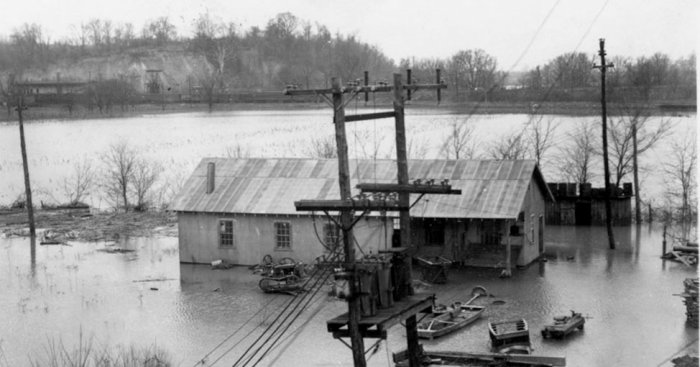
Tennessee River flooding in 1937. Credit: U.S. Army Corps of Engineers
Records of these older floods lead to a better understanding of the longer processes of change that affect the timing, size, and frequency of floods while allowing for better predictions and preparation of large floods in the future, she said.
“Both floods and droughts are hydroclimatology, and both are informed by paleo proxies,” Dr. Matthew Therrell, a dendrochronologist at UA who examines rings from trees around waterways to determine the frequency and extent of droughts on a long timeline said.
“We are using natural archives to determine what the range of natural variability in the system is since the instrumental record is so short.”
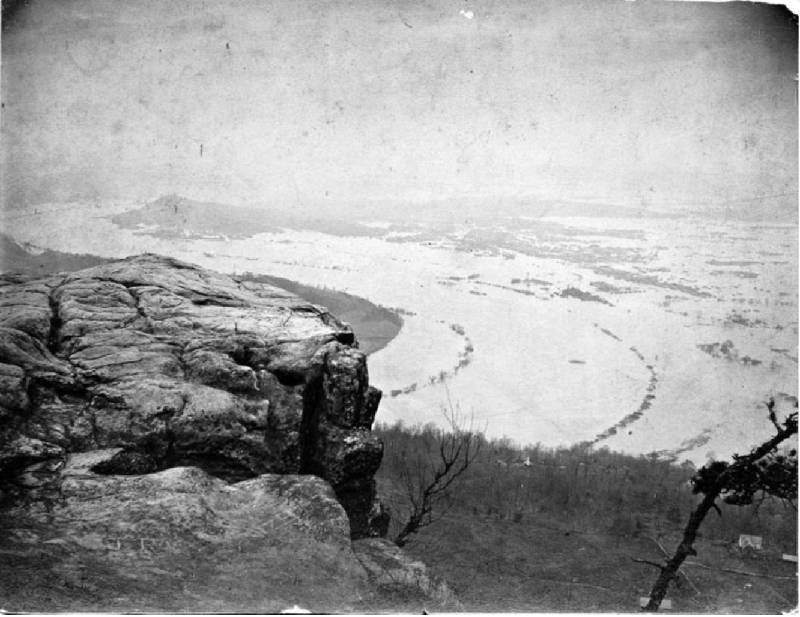
The only view of Chattanooga during the flood. Cameron Hill is at center left. All of South Chattanooga including Alton Park and East Lake is underwater. Credit: Times Free Press
Their work has already shown a massive decline in streamflow over the past 30 years, and they are putting that in perspective with tree ring records that reach hundreds, sometimes thousands, of years in the past depending on the age of the tree.
Tree rings, which record the annual growth cycle, can tell a lot about environmental change around the tree, and can pinpoint when floods and droughts occur. A wide tree ring indicates the tree took on a lot of water that year, and marks in the ring can indicate floodwaters brought debris that hit the tree. On the other side, a narrow ring means the tree lacked water compared to normal years.
“We know exactly the age of every ring,” Therrell said. “Trees can tell you the exact year and maybe the season of an event.”
Dr. Davis warns such events could happen again.
As the climate warms, extreme rainfall is growing more common in the Tennessee River Valley.
So, Davis says it’s important for planners to understand what they could be up against in the future. That requires knowing what’s happened in the past – not just in recent centuries, but over millennia.
“That information can be used to figure out whether or not dams have been adequately designed,” she says. “Has anything happened that’s bigger than what they have imagined?”
Written by Jan Bartek - AncientPages.com Staff Writer



